WHO Ebola Fact Sheet
 This WHO Ebola fact sheet (2021) provides comprehensive facts on Ebola, covering transmission, symptoms, prevention and control, vaccine, care for those recovered from Ebola and WHO response.
This WHO Ebola fact sheet (2021) provides comprehensive facts on Ebola, covering transmission, symptoms, prevention and control, vaccine, care for those recovered from Ebola and WHO response.
Source: WHO Ebola Fact Sheet
 This WHO Ebola fact sheet (2021) provides comprehensive facts on Ebola, covering transmission, symptoms, prevention and control, vaccine, care for those recovered from Ebola and WHO response.
This WHO Ebola fact sheet (2021) provides comprehensive facts on Ebola, covering transmission, symptoms, prevention and control, vaccine, care for those recovered from Ebola and WHO response.
Source: WHO Ebola Fact Sheet
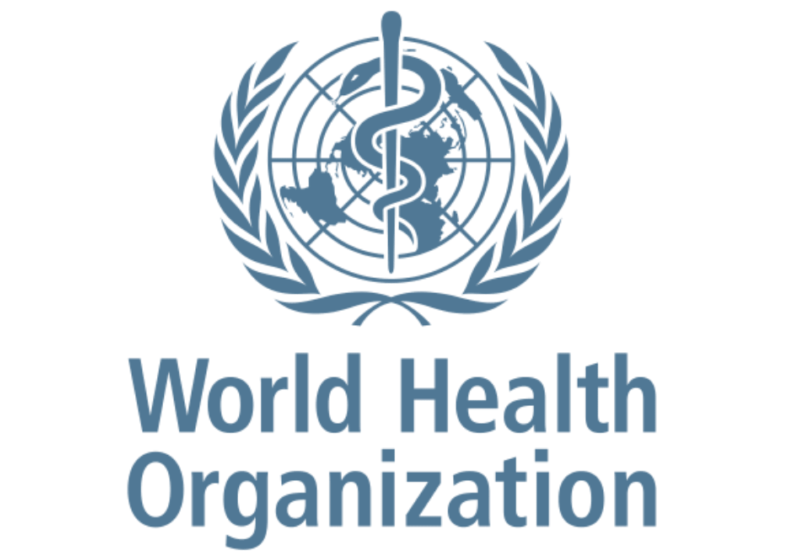
This fact sheet provides updated (2020) facts on Ebola Vaccines, addressing vaccine licensing, distribution, eligibility, adverse effects, ring vaccines and the role vaccines in outbreak control.
Source: Ebola FAQ’s (WHO)
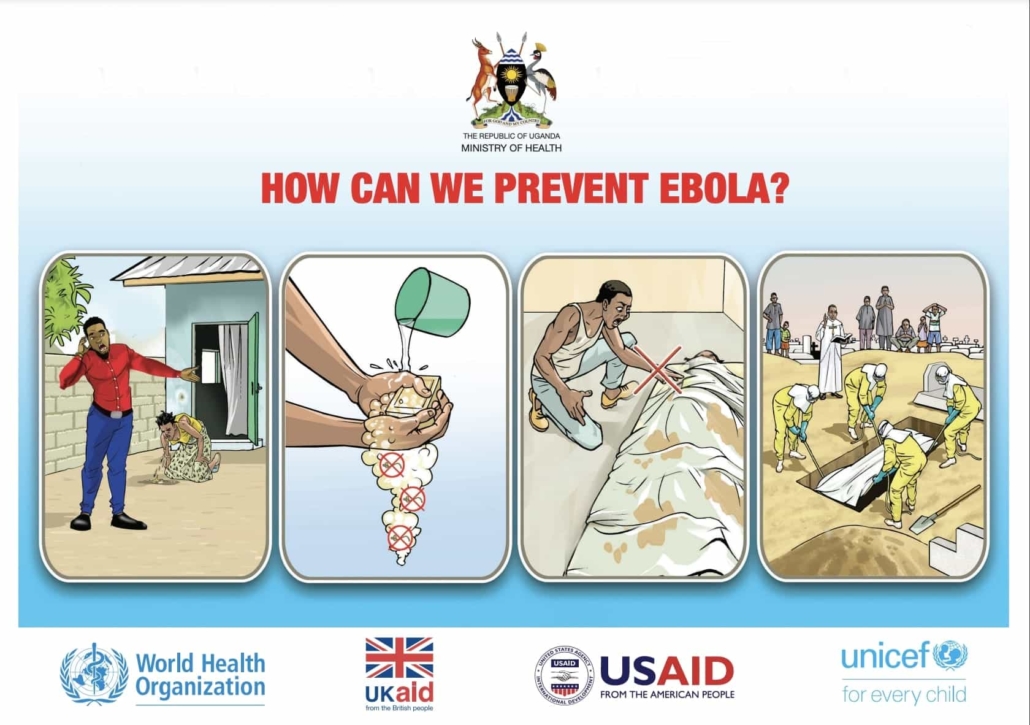 This resource consists of job aide cards with illustrations and talking points to guide health care workers’ conversations with community members. Topics include: general EVD facts, signs and symptoms, transmission, prevention, caring for the sick, safe&dignified burials, contact tracing and Ebola treatment units.
This resource consists of job aide cards with illustrations and talking points to guide health care workers’ conversations with community members. Topics include: general EVD facts, signs and symptoms, transmission, prevention, caring for the sick, safe&dignified burials, contact tracing and Ebola treatment units.
Source: How can we prevent Ebola- Job Aide
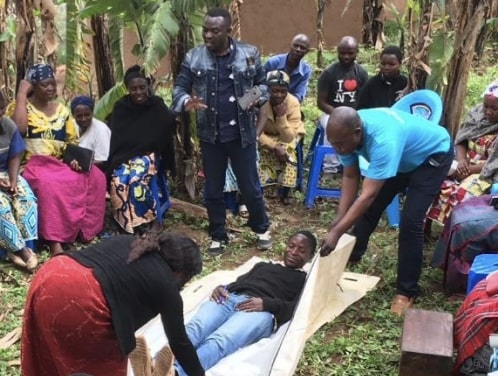 This Message guide provides key messages for various audiences (Communities, family members, survivors, leaders and government administrators and health care workers) on dignified and secure burial, IPC, vaccination, nutrition, medical care. Also included are messages for points of entry, survivors and on surveillance.
This Message guide provides key messages for various audiences (Communities, family members, survivors, leaders and government administrators and health care workers) on dignified and secure burial, IPC, vaccination, nutrition, medical care. Also included are messages for points of entry, survivors and on surveillance.
Sources:
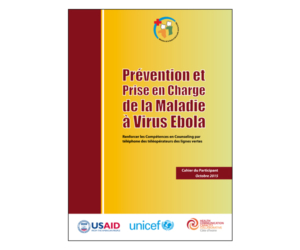 Guide des ressources pour les téléopérateurs pour le centre d’appel gratuit sur EBOLA en Côte d’Ivoire. (ligne verte). Ce guide peut être utilisé également par des agents communautaires, des hommes et femmes des médias etc.
Guide des ressources pour les téléopérateurs pour le centre d’appel gratuit sur EBOLA en Côte d’Ivoire. (ligne verte). Ce guide peut être utilisé également par des agents communautaires, des hommes et femmes des médias etc.
Last month, the USAID-funded MEASURE Evaluation Project released a video, available in both English and French, reflecting on the 2014 Ebola response within Guinea. Details below from their description:
Guinea was ground zero for the 2014 outbreak of Ebola virus, and health experts were concerned that other critical health issues such as routine care for maternal and child health, might suffer because of clinic closures or fears of contracting the virus. MEASURE Evaluation conducted a rapid assessment to understand better the effects of Ebola and published a journal article on the results, authored by Janine Barden O’Fallon, Alimou Barry, Paul Brodish, and Jack Hazerjian. Read it at measureevaluation.org/resources/publications/ja-15-198.
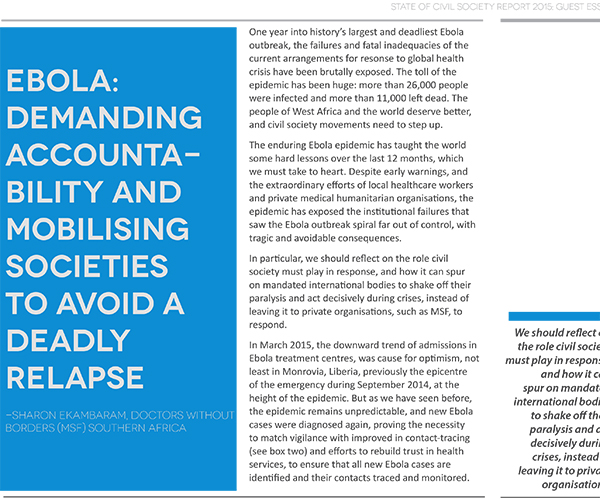 The enduring Ebola epidemic has taught the world some hard lessons over the last 12 months, which we must take to heart. This guest essay and analysis from CIvicus’ 2015 State of Civil Society report argues “we should reflect on the role civil society must play in response, and how it can spur on mandated international bodies to shake off their paralysis and act decisively during crises, instead of leaving it to private organisations, such as MSF, to respond.”
The enduring Ebola epidemic has taught the world some hard lessons over the last 12 months, which we must take to heart. This guest essay and analysis from CIvicus’ 2015 State of Civil Society report argues “we should reflect on the role civil society must play in response, and how it can spur on mandated international bodies to shake off their paralysis and act decisively during crises, instead of leaving it to private organisations, such as MSF, to respond.”
Download ‘Ebola: Demanding Accountability and Mobilizing Societies to Avoid a Deadly Relapse’ PDF
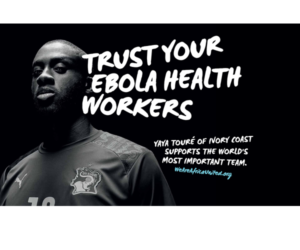 Africa United is a global team of football stars, celebrities, international health bodies and other organizations committed to stopping the spread of Ebola and building a healthier West Africa. Africa United provides critical education, resources and solidarity to those affected by Ebola in West Africa.
Africa United is a global team of football stars, celebrities, international health bodies and other organizations committed to stopping the spread of Ebola and building a healthier West Africa. Africa United provides critical education, resources and solidarity to those affected by Ebola in West Africa.
Our mission is to help stop the spread of Ebola and protect individuals and communities in affected areas by:
Africa United launched in the fall of 2014 to meet a critical need for support and behavior change messages, and uses the power of celebrity – African footballers – to deliver these messages through media, sports, health and governmental distribution partners. The campaign has produced and distributed a series of videos, radio spots and print materials (e.g., posters, football cards, notebooks) that feature locally influential celebrities delivering health and support messages, and we work closely with CDC in-country teams and NGO partners to adapt materials to rapidly changing needs. To view or download the materials, please visit www.WeAreAfricaUnited.org.
Africa United: Trust Your Health Worker Poster ft. Yaya Toure (Manchester City/Ivory Coast)
Everyone knows that Ebola kills, but what exactly does it do? This video by Dr. Michael Smith explains the science behind how Ebola attacks the body.
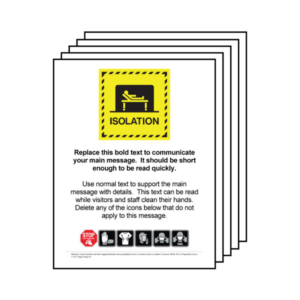 This is a collection of 13 graphical letter-size infection control templates for Microsoft Word. These templates:
This is a collection of 13 graphical letter-size infection control templates for Microsoft Word. These templates:
– simplify infection prevention & control messaging
– are pre-designed with symbols from The Infection Control Symbol Package to save you time
– are always ready to be printed in-house on letter-size paper for quick, timely turn-around
– can be saved once completed for quick & organized handling (getting approval, sharing approved files, changing messaging)
For best results, unzip the whole archive to a convenient place on your local hard drive.
Simply highlight the placeholder text within the template and type in your message. The symbols at the bottom imply that specific precautionary actions and PPE are required; highlight and delete any that do not apply to your current message before printing.
These templates are designed for Microsoft Office 2003 or newer for compatibility reasons.
Please leave the attribution and copyright information in the footer intact – this is required for free non-commercial reproduction of Creative Commons licensed graphics.
The Infection Control Symbol Package can be found at http://www.taggcleanhands.com/icsymbolpack
Individual Infection Control Symbol Template downloads at http://www.taggcleanhands.com/downloads

The Ebola Communication Network was originally developed by the Health Communication Capacity Collaborative (Cooperative Agreement #AID-OAA-A-12-00058) and expanded under Breakthrough ACTION (Cooperative Agreement #AID-OAA-A-17-00017) both under the leadership of Johns Hopkins Center for Communication Programs. This website is now maintained by Johns Hopkins Center for Communication Programs and its contents are the sole responsibility of CCP. The contents of this website do not necessarily reflect the views of USAID, the United States Government, or Johns Hopkins University.
